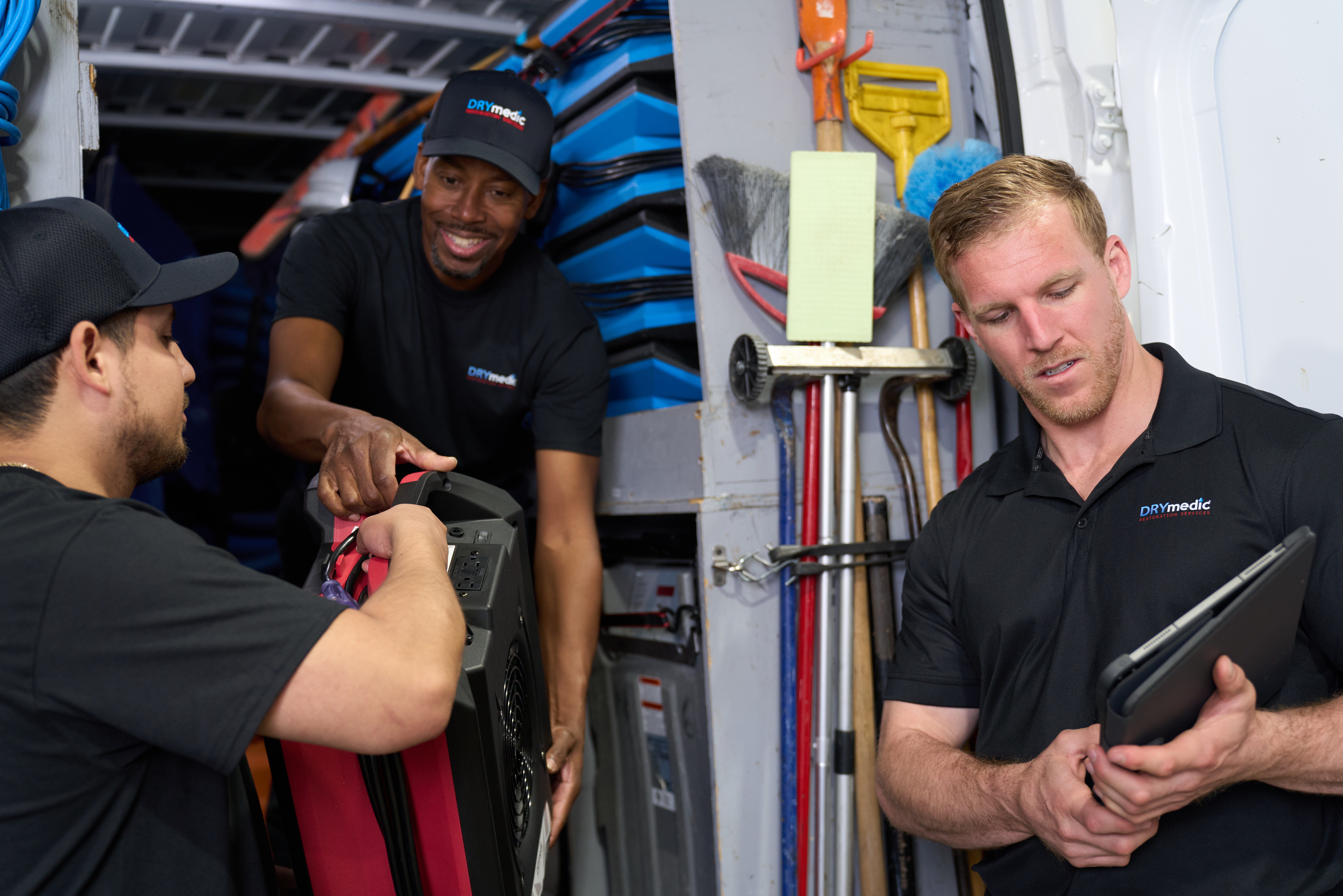November 12, 2025
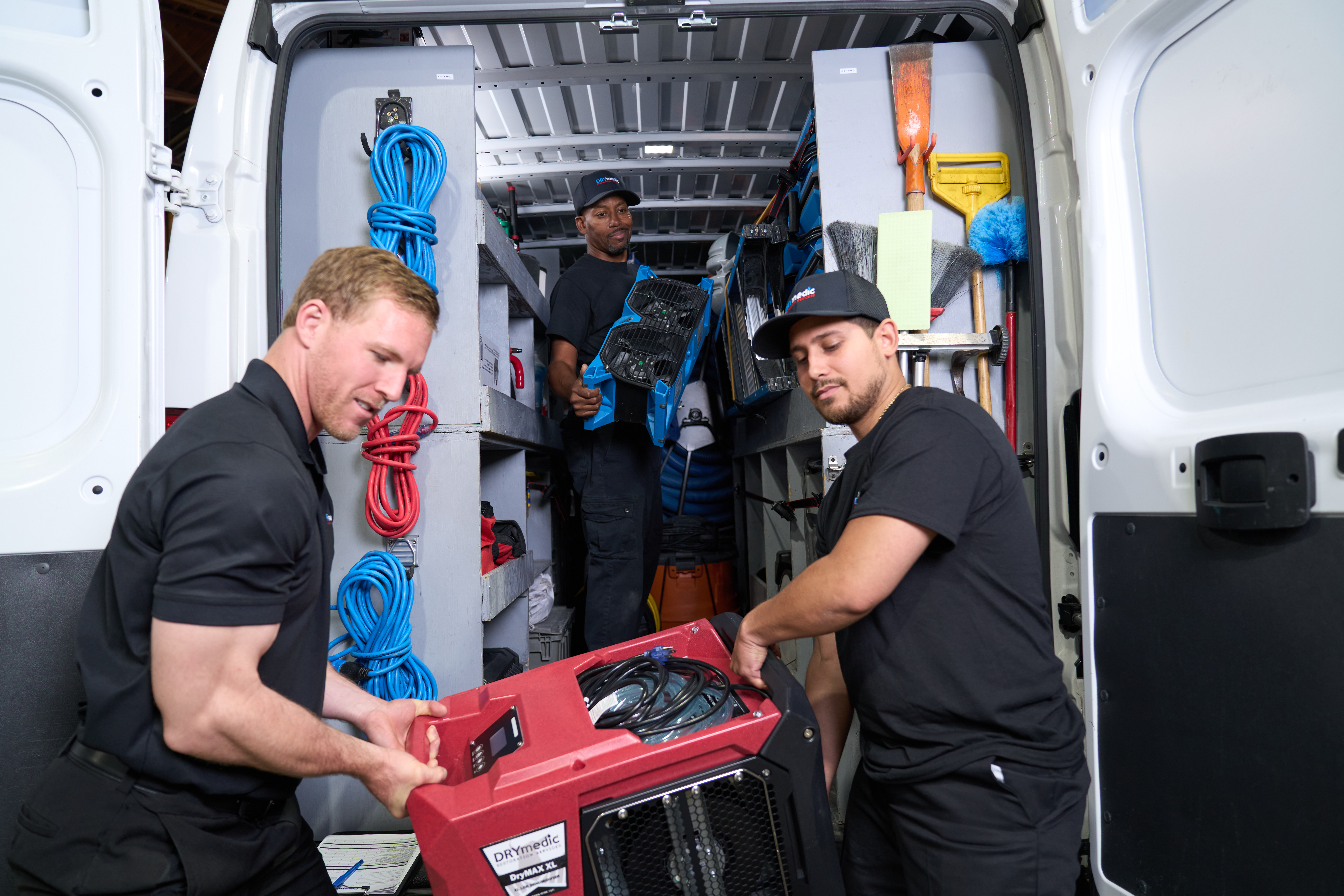
The world of property restoration isn’t just about fixing what’s broken; it’s about rebuilding lives, restoring peace of mind, and bringing order back to chaos. It’s a field driven by urgency, compassion, and skilled craftsmanship. If you’re a motivated entrepreneur with a desire to make a tangible difference in your community, and you thrive under pressure, then starting a restoration business might just be your calling. This step-by-step guide will walk you through the essential steps, from sketching your initial vision to navigating the day-to-day realities, ensuring you’re well-equipped to embark on this rewarding journey.
Table of Contents
Laying the Ground: Essential First Steps
Crafting Your Business Plan: Your Blueprint for Success
Building Your Operational Core
Connecting with Your Customers
Financial Fundamentals: Funding and Pricing
Navigating the Restoration Journey
Looking Ahead: Growth and Sustainability
The Spark: Why a Restoration Business?
Imagine the scene: a family stands distraught, staring at the water damage that’s ravaged their home after a burst pipe, or the charred remains following a kitchen fire. In that moment of profound vulnerability and distress, they need more than just a repair service; they need a lifeline. They need a restoration expert.
This is the inherent value of a restoration business. You’re not just offering a service; you’re providing hope, expertise, and a clear path forward during someone’s darkest hour. The demand for these services is constant and often unpredictable. Disasters, whether natural or man-made, are an unfortunate reality, creating a persistent need for skilled professionals who can mitigate damage, clean up the aftermath, and restore properties to their pre-loss condition.
Beyond the altruistic satisfaction, there’s a robust business opportunity. The restoration industry is resilient, often counter-cyclical to economic downturns because property damage still occurs regardless of the economic climate. It offers diverse income streams, from emergency services to full-scale rebuilds. If you’re looking for a venture that combines meaningful work with significant growth potential, where every day presents a new challenge and a chance to truly help people, then the spark for a restoration business has likely already ignited within you.
Laying the Groundwork: Essential First Steps
Every towering skyscraper begins with a meticulously planned foundation. Your restoration business is no different. The initial groundwork you lay will dictate the stability, direction, and ultimate success of your enterprise. Don’t rush this phase; it’s where your vision takes concrete form and potential pitfalls are identified and avoided.
Defining Your Niche: What Kind of Restoration?
The term “restoration” is broad, encompassing a wide array of specialized services. Just as a general contractor doesn’t build every type of structure, a restoration business doesn’t necessarily handle every type of disaster. Deciding on your niche early on is crucial for focused marketing, targeted training, and efficient resource allocation.
Consider the primary categories:
- Water Damage Restoration: This is arguably the most common and consistently in-demand service. It involves everything from extracting standing water to drying structures, preventing mold growth, and repairing affected areas after floods, burst pipes, or leaks. This often requires specialized drying equipment and moisture meters.
- Fire and Smoke Damage Restoration: Far more complex than just cleaning soot, this involves mitigating corrosive residues, deodorizing properties, cleaning contents, and rebuilding structural components. It demands meticulous attention to detail and specialized cleaning agents.
- Mold Remediation: A highly specialized and regulated field, mold remediation focuses on identifying, containing, removing, and preventing mold growth. This often arises as a secondary issue from unaddressed water damage and requires strict safety protocols due to potential health risks.
- Storm Damage Restoration: This encompasses a range of services following severe weather events, such as wind damage, hail damage, or even tornado aftermath. It can involve boarding up properties, tarping roofs, and then performing comprehensive repairs.
- Biohazard Cleanup: This niche involves the safe and discreet removal and disposal of hazardous materials, such as blood, bodily fluids, or chemical spills. It requires specific certifications, protective gear, and strict adherence to health regulations.
While you might start with one primary focus, say water damage, you can strategically expand your offerings as your business grows and your team gains experience. The key is to begin with clarity. What needs are most prevalent in your target geographic area? What are you most passionate about, or what skills do you and your potential team already possess? Research local demand, competitor offerings, and regulatory requirements for each niche. This initial decision will shape your equipment purchases, training needs, and marketing strategy.
How Franchising with DRYmedic Restoration Can Help
When you partner with DRYmedic Restoration, you don’t have to choose your niche blindly. The franchise model already covers multiple high-demand restoration services, including fire, water, mold, and reconstruction, giving you built-in diversity and multiple revenue streams from day one. Instead of testing what works, you gain a service mix that has already been fine-tuned for profitability and customer demand. DRYmedic’s experience helps you confidently define your niche and position your business to capture more opportunities in your local market.
Learn more about how DRYmedic helps franchise owners build a well-rounded restoration business.
Crafting Your Business Plan: Your Blueprint for Success
If defining your niche is choosing your destination, then your business plan is the GPS guiding you there. It’s not just a document for lenders; it’s your operational roadmap, a living document that forces you to think critically about every aspect of your venture.
A robust business plan should include:
- Executive Summary: A concise overview of your entire plan, highlighting your company, mission, services, and financial projections.
- Company Description: Detail your business structure, mission statement, vision, and the specific restoration services you’ll offer. Explain why your company is uniquely positioned to succeed.
- Market Analysis: Who are your potential customers (homeowners, property managers, commercial clients)? Who are your competitors? What are their strengths and weaknesses? What is the market size and growth potential in your area? Are there underserved niches you can target?
- Organization and Management: Who will run the company? What are their qualifications? Detail your organizational structure, key personnel, and legal entity (sole proprietorship, LLC, S-Corp).
- Service Line: Elaborate on each service you plan to offer. How will you deliver it? What makes your approach unique or superior?
- Marketing and Sales Strategy: How will you reach your target customers? What is your branding? How will you build relationships with insurance companies and referral sources? We’ll dive deeper into this later, but outline your initial approach here.
- Funding Request (if applicable): If you’re seeking loans or investment, clearly state the amount needed and how it will be used (equipment, payroll, marketing).
- Financial Projections: This is critical. Develop realistic 3-5 year projections for income statements, balance sheets, and cash flow statements. Include your startup costs, operating expenses, revenue forecasts, and break-even analysis. Be conservative in your revenue estimates and thorough in your expense calculations.
- Appendix: Include any supporting documents like resumes, market research, or permits.
Writing this plan will challenge your assumptions, uncover potential weaknesses, and ultimately strengthen your business concept. It’s an iterative process, so expect to revise it multiple times.
Legal Foundations: Registering Your Business and Securing Licenses
You wouldn’t build a house on shaky ground, and you certainly shouldn’t build a business without solid legal foundations. This phase ensures you’re operating legitimately, protecting yourself, and complying with all local, state, and federal regulations.
- Choose Your Business Structure:
- Sole Proprietorship: Simplest, but offers no personal liability protection.
- Partnership: Similar to a sole proprietorship for liability, but with shared ownership.
- Limited Liability Company (LLC): Offers personal liability protection for owners and pass-through taxation. Often a good choice for small to medium-sized businesses.
- Corporation (S-Corp or C-Corp): Offers strongest liability protection, but more complex to set up and maintain.
- Register Your Business Name: Check for availability with your state’s Secretary of State or equivalent office and register your chosen name. You may also need to register a “Doing Business As” (DBA) name if you operate under a name different from your legal business name.
- Obtain an Employer Identification Number (EIN): This is like a Social Security number for your business, issued by the IRS. You’ll need it for tax purposes and opening a business bank account.
- Secure Necessary Licenses and Permits: This is where the restoration industry can get complex. Requirements vary significantly by state, county, and even city.
- General Business License: Almost universally required.
- Contractor’s License: Many states require general contractor licenses, even for specialized restoration work, especially if you’re involved in reconstruction.
- Specialty Licenses: If you’re doing mold remediation, lead-based paint renovation, or asbestos abatement, you’ll almost certainly need specific certifications and licenses. These often involve specialized training and testing.
- Environmental Permits: Depending on the type of waste you generate (e.g., contaminated water, hazardous materials), you may need permits for disposal.
- Obtain Business Insurance: This is non-negotiable for a restoration business. You’ll need:
- General Liability Insurance: Protects against claims of bodily injury or property damage caused by your business operations.
- Commercial Property Insurance: Covers your office space, equipment, and inventory.
- Worker’s Compensation Insurance: Required if you have employees, covering medical expenses and lost wages for work-related injuries.
- Commercial Auto Insurance: For your company vehicles.
- Professional Liability (Errors & Omissions) Insurance: May be advisable for claims related to professional negligence.
- Pollution Liability Insurance: Crucial for mold and biohazard work, covering environmental contamination incidents.
Work with an experienced insurance broker who understands the unique risks of the restoration industry. They can tailor a comprehensive policy to protect your assets and employees.
How Franchising with DRYmedic Restoration Can Help
One of the biggest challenges for new restoration entrepreneurs is creating a business plan that actually works. When you franchise with DRYmedic Restoration, you’re not building from scratch, you’re adopting a plan that’s already been tested and established across multiple markets. DRYmedic’s business model gives you a clear roadmap with established systems, supplier partnerships, and marketing strategies so you can launch faster and more effectively. You still own your business, but you benefit from a franchise framework that eliminates the guesswork.
Read More about DRYmedic Restoration’s Business Model
Building Your Operational Core
With the blueprints in hand and the legal groundwork complete, it’s time to gather the tools and talent that will power your restoration business. This is where the rubber meets the road, where your plans begin to translate into tangible assets and a capable workforce.
Assembling Your Toolkit: Essential Equipment and Supplies
Think of a restoration crew as highly specialized surgeons, and their equipment as their instruments. The right tools not only enable efficient and effective work but also communicate professionalism and expertise to clients. Your equipment needs will largely depend on your chosen niche.
For a general restoration business, expect to invest in:
- Water Damage Restoration Equipment:
- Water Extractors/Pumps: Submersible pumps for large volumes, truck-mounted or portable extractors for carpets and upholstery.
- Air Movers/Dehumidifiers: Industrial-grade axial fans and low-grain refrigerant (LGR) or desiccant dehumidifiers are critical for effective drying.
- Moisture Meters/Thermal Imaging Cameras: Essential for identifying hidden moisture and tracking the drying process.
- Air Scrubbers/HEPA Vacuums: For filtering airborne contaminants, especially important in mold or dust-heavy environments.
- Protective Gear: PPE (personal protective equipment) like respirators, gloves, eye protection, and hazmat suits for mold or biohazard jobs.
- Fire and Smoke Damage Restoration Equipment:
- Specialized Cleaning Agents: For soot, smoke residue, and deodorization.
- Ozone Generators/Thermal Foggers: For odor removal (use with extreme caution and proper training).
- Soda Blasters/Dry Ice Blasters: For effective soot removal from various surfaces.
- HEPA Vacuums/Air Scrubbers: Again, crucial for indoor air quality.
- General Equipment:
- Work Vehicles: Reliable vans or trucks to transport equipment and crew.
- Safety Equipment: First aid kits, fire extinguishers, warning signs, cones.
- Hand Tools: Basic carpentry, demolition tools, ladders.
- Communication Devices: Radios, smartphones, and a robust scheduling system.
- Documentation Tools: Cameras (digital and thermal), tablets for on-site documentation and reporting.
Strategic Acquisition: Don’t feel pressured to buy everything new upfront. Consider leasing larger equipment, especially in the beginning, to conserve capital. Explore reputable used equipment dealers, but ensure all machinery is in excellent working condition. Prioritize quality over cost for critical items; cheap equipment often leads to breakdowns and costly delays. Your equipment is an investment in your capability and efficiency.
Hiring Your A-Team: Finding and Training the Right People
A restoration business is only as strong as its team. You’re not just hiring muscle; you’re hiring problem-solvers, empathetic communicators, and skilled technicians who can perform under pressure. Finding the right people is paramount, and then equipping them with the necessary training is how you transform them into an A-Team.
- Define Your Roles: Initially, you might wear many hats. As you grow, you’ll need:
- Restoration Technicians: The frontline crew who perform the hands-on work.
- Project Managers/Lead Technicians: Oversee projects, manage crews, and interact with clients and adjusters.
- Administrative Staff: Handle scheduling, billing, customer service, and dispatch.
- Look for Key Qualities: Beyond specific skills, prioritize:
- Empathy and Communication Skills: Your team will interact with distressed clients. Compassion and clear communication are vital.
- Problem-Solving Ability: Restoration jobs are rarely straightforward; adaptability is key.
- Strong Work Ethic and Reliability: The work can be physically demanding and often involves irregular hours.
- Attention to Detail: Crucial for thorough cleanup, drying, and preventing secondary damage.
- Team Players: Collaboration is essential on complex projects.
- Prioritize Training and Certifications: This is non-negotiable for professionalism, safety, and industry credibility.
- IICRC Certifications: The Institute of Inspection, Cleaning and Restoration Certification (IICRC) is the gold standard for restoration professionals. Key certifications include:
- Water Damage Restoration Technician (WRT)
- Applied Structural Drying (ASD)
- Fire and Smoke Restoration Technician (FSRT)
- Mold Remediation Technician (AMRT)
- Odor Control Technician (OCT) Encourage and fund your team’s pursuit of these certifications. It boosts their skills, your company’s reputation, and compliance with industry best practices.
- Safety Training: OSHA regulations are critical. Ensure your team is trained in confined space entry, bloodborne pathogens, hazardous material handling, and ladder safety.
- On-the-Job Training: Complement formal training with mentorship and practical experience. Start new hires on less complex jobs and gradually increase their responsibilities.
- IICRC Certifications: The Institute of Inspection, Cleaning and Restoration Certification (IICRC) is the gold standard for restoration professionals. Key certifications include:
- Create a Positive Culture: Retention is just as important as recruitment. Foster a culture of safety, respect, continuous learning, and recognition. Your team is your most valuable asset; invest in them.
How Franchising with DRYmedic Can Help
Recruiting and retaining reliable technicians is one of the hardest parts of running a restoration business. That’s why DRYmedic gives you access to hiring resources and operational training to help you build a strong, professional team. From defining job roles to implementing best practices in safety and customer care, DRYmedic’s franchise support ensures your staff is equipped to deliver excellence. Their hiring and training tools save you time, help to reduce turnover, and help your team represent the brand with confidence and consistency.
Learn more about how DRYmedic Restoration offers hiring and retention support
Connecting with Your Customers
A restoration business, by its very nature, relies heavily on trust and rapid response. When disaster strikes, people don’t browse; they frantically search for immediate, reliable help. Your ability to connect with potential clients, often through established networks, is paramount to securing those critical jobs.
Forging Partnerships: Insurance Companies and Referral Networks
In the restoration world, insurance companies are often the gatekeepers to a steady stream of work. Building strong relationships with adjusters and establishing referral networks can be the lifeblood of your business.
- Understand the Insurance Claims Process: Familiarize yourself with how various insurance policies work (homeowner’s, commercial), the claims process, and the specific documentation adjusters require (e.g., detailed estimates, photos, moisture readings, drying logs). Your ability to speak their language and provide comprehensive, accurate documentation will make you a preferred vendor.
- Become a Preferred Vendor: Many insurance companies have “preferred vendor” programs. This means you agree to their pricing structures (often using industry-standard software like Xactimate), service level agreements, and response times in exchange for direct referrals. Getting on these lists is highly competitive and often requires:
- Demonstrated expertise and IICRC certifications.
- Adequate insurance coverage and bonding.
- A track record of quality work and excellent customer service.
- The ability to scale and respond quickly to high call volumes.
- Patience and persistence in building relationships with insurance representatives.
- Network with Local Insurance Adjusters and Agents: Attend local industry events, chambers of commerce meetings, and professional networking groups. Introduce yourself to local insurance agents and independent adjusters. Offer to provide training sessions on restoration best practices or conduct facility tours. The goal is to build rapport and demonstrate your professionalism. They are often the first point of contact for policyholders and can be powerful referral sources.
- Cultivate Referral Networks: Beyond insurance, numerous other professionals regularly encounter property damage situations:
- Plumbers: Often called for burst pipes or leaks, they can refer water damage restoration.
- Roofers: Frequently deal with storm damage and can refer both roof repair and interior restoration.
- HVAC Technicians: May encounter mold or water damage in ductwork or basements.
- Real Estate Agents & Property Managers: Need reliable restoration services for properties they manage or sell.
- Home Inspectors: Can refer clients who discover issues during inspections.
- Public Adjusters: Independent adjusters who advocate for policyholders.
Actively seek out these professionals, offer reciprocal referral agreements, and always deliver exceptional service to maintain these vital relationships. Send thank-you notes, offer small tokens of appreciation, and stay in regular communication.
Spreading the Word: Marketing Your Restoration Business
While partnerships are crucial, direct marketing is also essential to build your brand and capture immediate opportunities. When disaster strikes, people turn to search engines and local directories.
- Develop a Strong Online Presence:
- Professional Website: Your website is your 24/7 storefront. It must be mobile-friendly, clearly state your services, highlight your certifications, showcase testimonials, and provide emergency contact information prominently.
- Search Engine Optimization (SEO): Optimize your website for local search terms like “water damage restoration [your city]” or “mold removal [your county]”. Focus on local SEO strategies, including Google My Business optimization.
- Online Reviews: Encourage satisfied customers to leave reviews on Google, Yelp, and other platforms. Positive reviews are incredibly powerful social proof.
- Social Media: While not primary lead generators for emergency services, social media can build brand awareness and demonstrate your expertise (e.g., sharing prevention tips, before/after photos with client permission).
- Online Directories: List your business on local directories and relevant industry-specific sites.
- Emergency Marketing Strategies:
- 24/7 Availability: This isn’t just a service; it’s a marketing statement. Ensure your phone lines are always staffed, and your emergency response team is ready.
- Rapid Response: Being the first to respond often means getting the job. Your marketing should emphasize your speed and readiness.
- Local Advertising: Consider targeted local ads in community newspapers, radio spots during peak disaster seasons, or even direct mail to areas recently affected by severe weather.
- Traditional Marketing & Branding:
- Branded Vehicles and Uniforms: Professional, clean, and clearly branded vehicles and uniforms instill confidence and provide mobile advertising.
- Door Hangers/Flyers: Can be effective in localized areas after a widespread event (e.g., a specific neighborhood hit by a storm).
- Community Involvement: Sponsor local events, participate in community service. This builds goodwill and brand recognition.
Your marketing efforts should consistently reinforce your reliability, expertise, and compassionate approach. You’re selling peace of mind in a crisis.
How Franchising with DRYmedic Restoration Can Help
In restoration, visibility is everything, and DRYmedic helps you stand out. Franchise owners benefit from the brand’s national recognition and powerful local marketing programs that drive leads directly to your territory. From website optimization and SEO to digital ads and reputation management, DRYmedic’s marketing support gives you professional exposure without the learning curve. You’ll also receive guidance on community outreach and referral partnerships, helping you build trust and grow your client base faster than independent competitors.
Financial Fundamentals: Funding and Pricing
No matter how noble your mission, a business cannot survive without a sound financial strategy. Securing the necessary capital to launch and operate, and then pricing your services effectively, are critical pillars of your success.
Securing Your Seed Money: Funding Your Vision
Starting a restoration business requires a significant upfront investment in equipment, training, vehicles, and initial operating capital. Understanding your funding options is crucial.
- Detailed Startup Cost Analysis: Before seeking funding, create a meticulous breakdown of every anticipated expense:
- Equipment: Initial purchases and potential leases for extractors, dehumidifiers, air movers, specialty tools.
- Vehicles: Purchase or lease of trucks/vans, customization, and commercial auto insurance.
- Office/Warehouse Space: Rent, utilities, build-out costs.
- Licenses, Permits, and Certifications: Fees for business registration, contractor licenses, IICRC training.
- Insurance: Annual premiums for various policies.
- Marketing and Branding: Website development, initial SEO, local advertising, uniforms.
- Payroll: Initial salaries for yourself and any early hires (plan for several months of operating expenses before profitability).
- Working Capital: A reserve fund to cover unexpected expenses and bridge gaps in cash flow.
- Explore Funding Options:
- Self-Funding/Bootstrapping: Using personal savings or reinvesting early profits. This offers maximum control but limits scalability.
- Friends and Family: A common source for initial capital, but ensure clear loan agreements are in place to avoid personal strain.
- Small Business Administration (SBA) Loans: Government-backed loans offered through banks, often with favorable terms for small businesses.
- Traditional Bank Loans: Commercial loans, equipment loans, or lines of credit from banks. Requires a solid business plan, good credit history, and often collateral.
- Equipment Financing/Leasing: Specifically for purchasing or leasing expensive machinery. Can free up working capital.
- Angel Investors or Venture Capital: Less common for restoration startups but possible for highly scalable models or unique technologies.
The Pitch: Regardless of the source, you’ll need a compelling business plan that clearly demonstrates market demand, your competitive advantage, realistic financial projections, and how the requested funds will be utilized to generate a return on investment.
Pricing 101: Valuing Your Services Fairly
Pricing in the restoration industry is a delicate balance. You need to be competitive to win bids, but also profitable enough to sustain and grow your business, cover your high overheads, and pay your skilled team fairly.
- Understand Industry Standards: The vast majority of insurance-related restoration work is priced using industry-standard software. This software provides a detailed, granular breakdown of costs for various services (e.g., per square foot for drying, per linear foot for baseboard removal).
- Learn the industry-standard software: It’s absolutely critical to become proficient in pricing software. Invest in training for yourself and your key project managers. This ensures your estimates are accurate, consistent, and accepted by insurance adjusters, minimizing disputes and payment delays.
- Factor in All Costs: Ensure your pricing strategy accounts for:
- Direct Costs: Labor (wages, benefits, payroll taxes), materials, equipment rental/depreciation, specialized subcontractors.
- Indirect Costs (Overhead): Office rent, utilities, insurance, administrative salaries, marketing, vehicle maintenance, legal/accounting fees.
- Profit Margin: What percentage do you aim to profit on each job after all costs? This is essential for reinvestment and business growth.
- Develop a Clear Pricing Structure for Non-Insurance Work: For direct-to-consumer or commercial clients not going through insurance, you’ll have more flexibility.
- Hourly Rates: For certain types of work (e.g., initial assessment, small repairs).
- Project-Based Fees: For larger, clearly defined projects.
- Emergency Service Call-Out Fees: To cover immediate dispatch costs.
- Value-Based Pricing: While Xactimate dictates much, remember you’re also selling peace of mind, rapid response, and expert problem-solving. Highlight your certifications, advanced equipment, and commitment to customer service. This differentiates you from less reputable operators and justifies your pricing.
Regular Review: Periodically review your pricing strategy and actual job costs. Are you consistently underbidding or overbidding? Are your profit margins healthy? Adjust as needed to remain competitive and profitable.
How Franchising with DRYmedic Can Help
Pricing restoration services can be complex, especially when dealing with insurance companies and variable job costs. DRYmedic Restoration’s franchise model gives you access to pricing systems, estimating tools, and training designed for profitability. You’ll learn how to balance competitive pricing with healthy margins, and how to grow not just as a technician, but as a confident business owner. With DRYmedic, you’re equipped to make data-driven decisions that support sustainable growth.
Ready to take the first step towards becoming a DRYmedic Restoration franchise owner?
Navigating the Restoration Journey
Once the funding is in place and the team is ready, the real work begins. Understanding the typical workflow of a restoration project, from that initial distressed call to the final handshake, is key to delivering consistent quality and building a stellar reputation.
Understanding the Job Process: From Call to Completion
Every restoration job, while unique in its specifics, generally follows a predictable flow. Mastering this process ensures efficiency, client satisfaction, and proper documentation for insurance purposes.
- The Emergency Call (The First Alarm): This is often a panicked call from a client experiencing water flooding their basement, smoke filling their home, or a tree through their roof.
- Rapid Response: This is your first moment to shine. Your ability to dispatch a team quickly to assess the situation and mitigate further damage is critical. Many calls come in at odd hours, so a 24/7 dispatch system is essential.
- Initial Assessment & Documentation: The lead technician arrives, assesses the scope of the damage, identifies safety hazards, and begins extensive documentation with photos and notes. This forms the basis of the claim.
- Immediate Mitigation: This is about stopping the bleeding. Turning off water, boarding up windows, tarping roofs, extracting standing water.
- Scope of Work & Estimation:
- Detailed Assessment: A thorough evaluation of all affected materials, moisture levels, and damage extent.
- Estimate Generation: Using software like Xactimate, a detailed estimate is prepared, outlining every step, material, and labor cost required for restoration.
- Insurance Communication: The estimate is submitted to the insurance adjuster for review and approval. Clear communication with the adjuster is vital to prevent delays.
- Project Execution (The Restoration Phase): Once the scope is approved, your team gets to work.
- Containment: Especially for mold or fire damage, establishing containment zones to prevent cross-contamination is crucial.
- Demolition & Removal: Safely removing irreparably damaged materials (e.g., soaked drywall, charred insulation).
- Drying/Cleaning/Deodorization: Deploying drying equipment, performing specialized cleaning (e.g., soot removal), and eliminating odors.
- Monitoring & Documentation: Continuous monitoring of drying progress (moisture readings), air quality, and daily photo documentation of work performed. This data is critical for insurance claims.
- Reconstruction & Repair (The Rebuild): Once the property is dry, clean, and stable, the reconstruction phase begins.
- Structural Repairs: Repairing framing, subflooring, and other structural elements.
- Finishing Touches: Installing new drywall, flooring, painting, cabinetry – bringing the property back to its pre-loss condition. This might be done by your in-house team or a network of trusted subcontractors.
- Final Inspection & Walk-Through:
- Quality Control: A thorough inspection by your project manager to ensure all work meets your company’s standards and client expectations.
- Client Walk-Through: A final tour with the client to demonstrate completed work, ensure their satisfaction, and obtain their sign-off.
- Invoicing & Payment:
- Final Invoice: Submitting a detailed invoice, often directly to the insurance company or the client, based on the approved estimate and any agreed-upon changes.
- Follow-Up: Promptly addressing any questions or concerns regarding payment.
This systematic approach ensures consistency, quality, and proper management of expectations for both the client and the insurance company.
How Franchising with DRYmedic Can Help
Every restoration project comes with its own challenges, from coordinating insurance claims to handling specialized cleanup. DRYmedic gives franchise owners comprehensive training that covers both the technical and operational sides of the business. You’ll gain step-by-step guidance on water extraction, fire restoration, mold remediation, and reconstruction, plus ongoing support to ensure quality and compliance. With DRYmedic, you’re never left to figure it out alone, their team of experts is with you every step of the way.
Customer Service Excellence: Turning Clients into Advocates
In a crisis, people remember who helped them. Exceptional customer service in the restoration industry isn’t just a nicety; it’s a fundamental competitive advantage that turns one-time clients into lifelong advocates and powerful referral sources.
- Empathy and Communication:
- Acknowledge Their Distress: Start every interaction by acknowledging the client’s difficult situation. “I understand this is a stressful time…” goes a long way.
- Clear and Frequent Updates: Proactively communicate what’s happening, what to expect next, and any potential delays. Avoid industry jargon. Speak plainly and reassuringly.
- Set Realistic Expectations: Don’t overpromise on timelines or outcomes. Be honest about the process and potential challenges.
- Professionalism at Every Touchpoint:
- Appearance: Clean, branded vehicles and uniforms instill confidence.
- Respect for Property: Treat the client’s home or business as if it were your own. Use shoe covers, protect unaffected areas, and clean up thoroughly at the end of each day.
- Problem Resolution: When issues inevitably arise, address them promptly, professionally, and with a solution-oriented mindset. Don’t play the blame game.
- Go Above and Beyond:
- Small Gestures: A follow-up call a few weeks after job completion, providing tips for future prevention, or even a small housewarming gift can leave a lasting positive impression.
- Education: Empower clients with knowledge about the restoration process, prevention tips, and how to interact with their insurance company.
- Advocacy: Sometimes, clients need help navigating the complexities of their insurance claim. Being a knowledgeable guide, within ethical boundaries, can build immense trust.
The Ripple Effect: A happy client will not only provide glowing reviews but will also tell their friends, family, and colleagues. In a service industry built on trust during crisis, word-of-mouth is priceless. Transform crisis into an opportunity to build enduring relationships.
How Franchising with DRYmedic Can Help
In restoration, your reputation is your greatest asset, and DRYmedic helps you build one that lasts. Through customer service training, communication best practices, and brand standards, you’ll learn how to provide compassion and professionalism during stressful times for your clients. DRYmedic’s systems ensure every interaction reflects the company’s values of care, trust, and efficiency. As a franchise owner, you’re not just running a business, you’re restoring peace of mind to your community with a trusted national brand behind you.
Interested in becoming a DRYmedic Restoration? Click here to begin your journey!
Looking Ahead: Growth and Sustainability
Launching a restoration business is a monumental achievement, but the journey doesn’t end with your first successful project. True success lies in building a resilient, adaptable, and continuously growing enterprise.
- Continuous Improvement and Training: The restoration industry is constantly evolving with new technologies, techniques, and regulations.
- Stay Certified: Ensure your team’s IICRC and other relevant certifications are current.
- Embrace New Tech: Invest in advanced equipment (e.g., state-of-the-art drying technology, specialized cleaning tools) that can improve efficiency, reduce drying times, and expand your service offerings.
- Learn from Every Job: Conduct post-project reviews to identify what went well and what could be improved. This iterative learning process is vital for refining your operations.
- Strategic Expansion:
- Geographic Expansion: Once established in one area, consider expanding into adjacent territories or opening satellite offices.
- Service Diversification: After mastering one niche (e.g., water damage), strategically add complementary services like fire restoration, mold remediation, or even reconstruction services (if not already offered). This can make your business a one-stop shop for clients.
- Commercial vs. Residential: While residential is often the starting point, consider targeting commercial clients, which can offer larger, more predictable contracts.
- Financial Prudence and Reinvestment:
- Monitor Cash Flow: Keep a vigilant eye on your finances. The restoration business can have unpredictable revenue streams.
- Build Reserves: Maintain healthy cash reserves to weather economic downturns, unexpected large expenses, or quiet periods.
- Reinvest Profits: Wisely reinvest profits back into the business – whether it’s new equipment, employee training, or an expanded marketing budget – to fuel sustainable growth.
- Networking and Industry Engagement:
- Join Associations: Participate in industry associations like the Restoration Industry Association (RIA) or your local Chamber of Commerce. These provide invaluable networking opportunities, advocacy, and access to industry trends.
- Mentor and Be Mentored: Seek advice from seasoned professionals and consider mentoring emerging talent.
Starting a restoration business is more than just launching a company; it’s about building a team, cultivating trust, and becoming a pillar of support in your community during times of need. It’s a challenging yet incredibly fulfilling endeavor that, with careful planning and unwavering dedication, can lead to profound personal and professional rewards. The path may be winding, but with this guide as your compass, you’re well on your way to building a lasting legacy of restoration.
Business ownership may be closer than you think. Take the next step towards being your own boss today.
Recent News
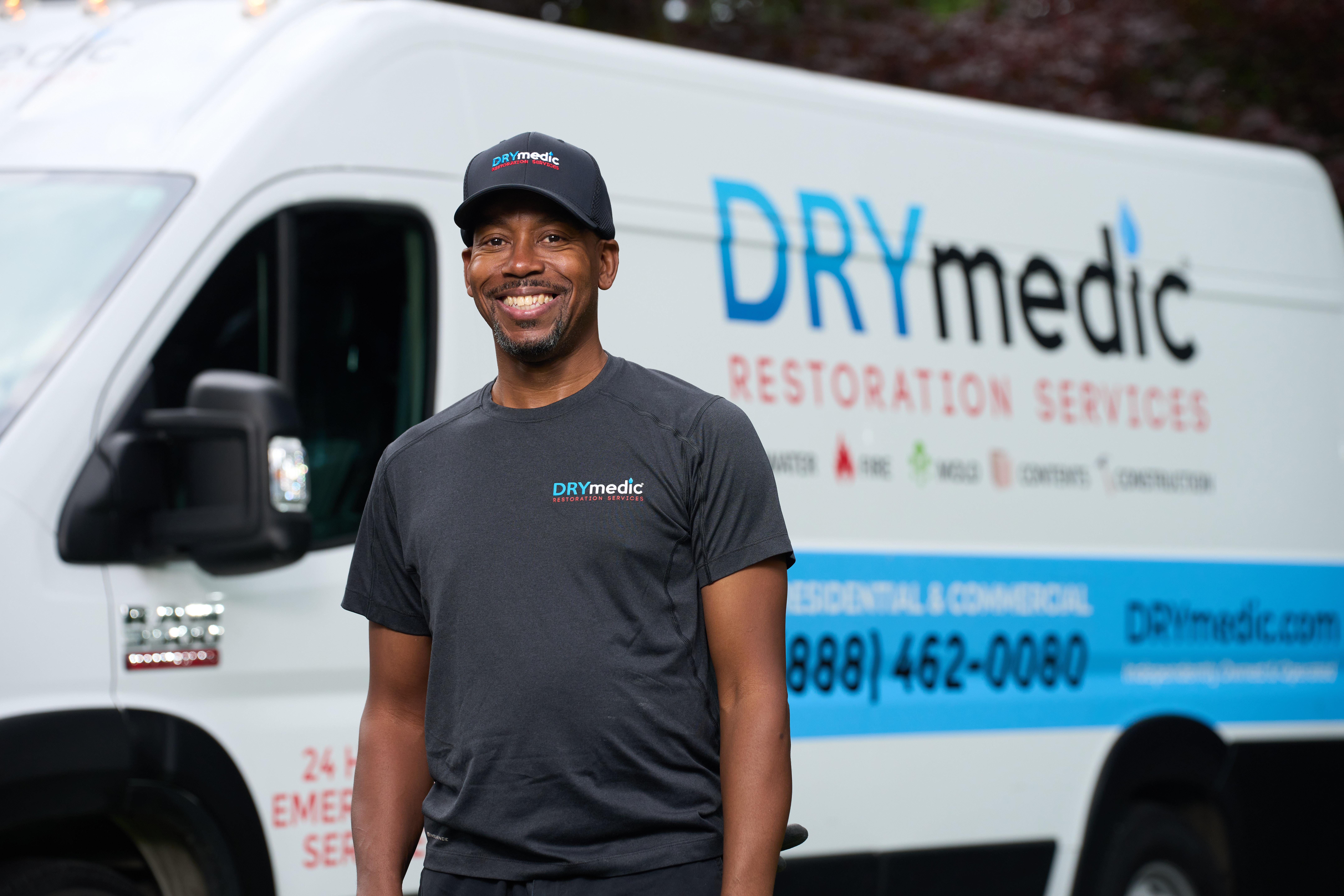
Franchising in Disaster Recovery: The DRYmedic Advantage in a Recession-Resilient Market
May 6, 2025
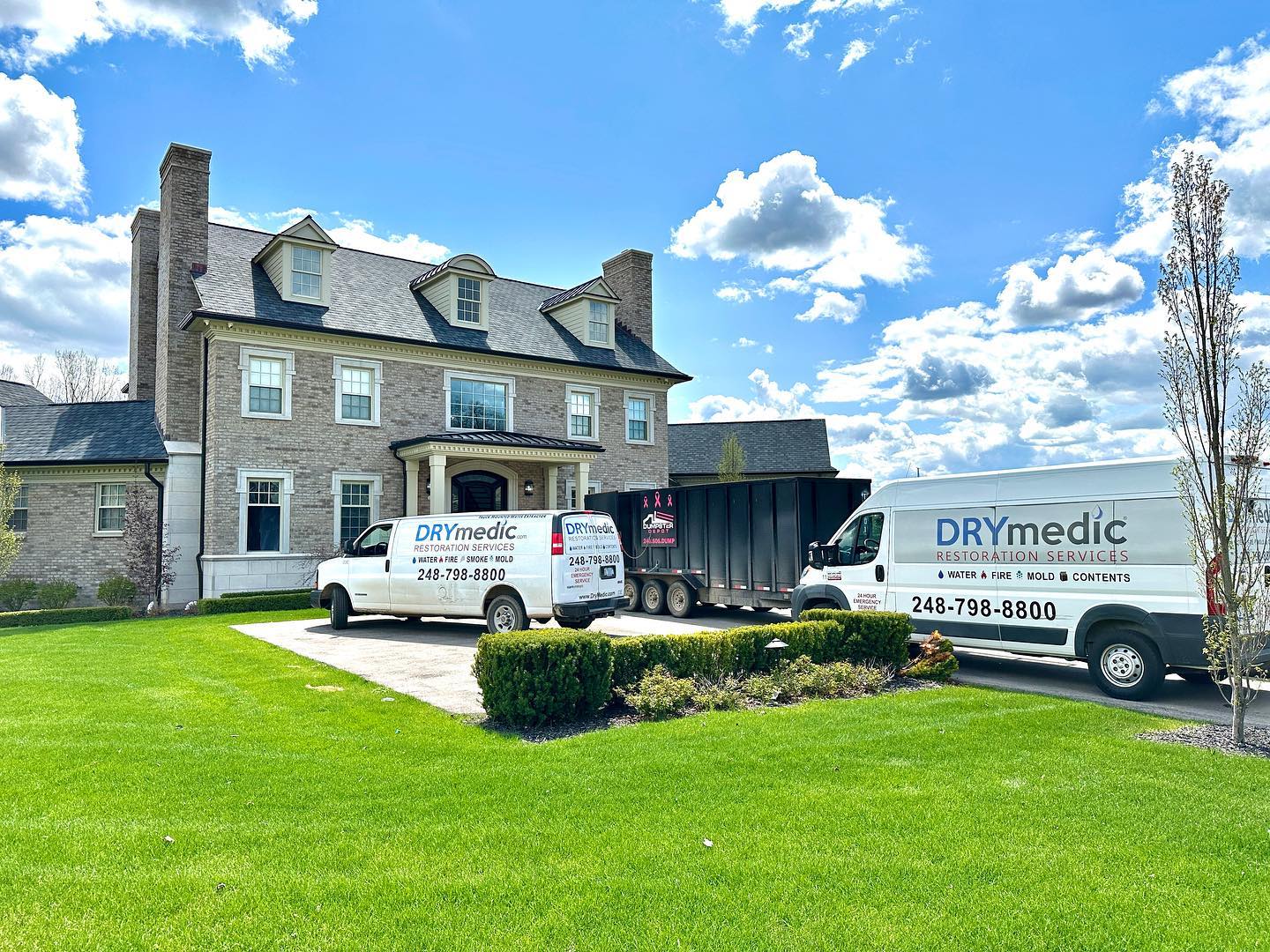
How Much Does It Cost to Start a DRYmedic Franchise?
April 1, 2025

The Benefits of Owning a Restoration Franchise in Your Community
March 5, 2025
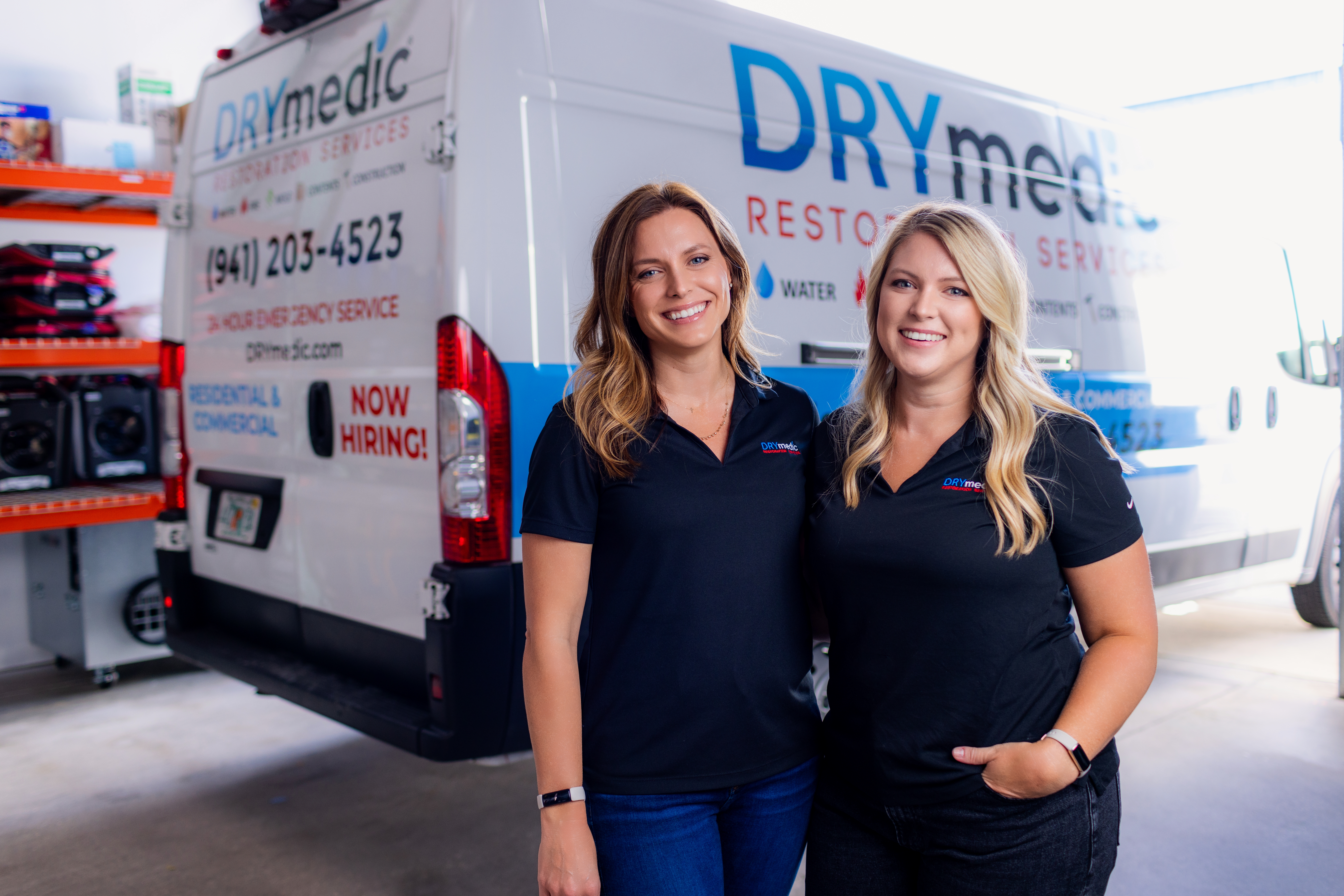
Business Opportunity for Women: How DRYmedic Empowers Women Franchise Owners
January 27, 2025

How to Finance Your Franchise: Exploring Various Funding Options
December 23, 2024

Top Markets are Available for Franchising with DRYmedic!
November 25, 2024
